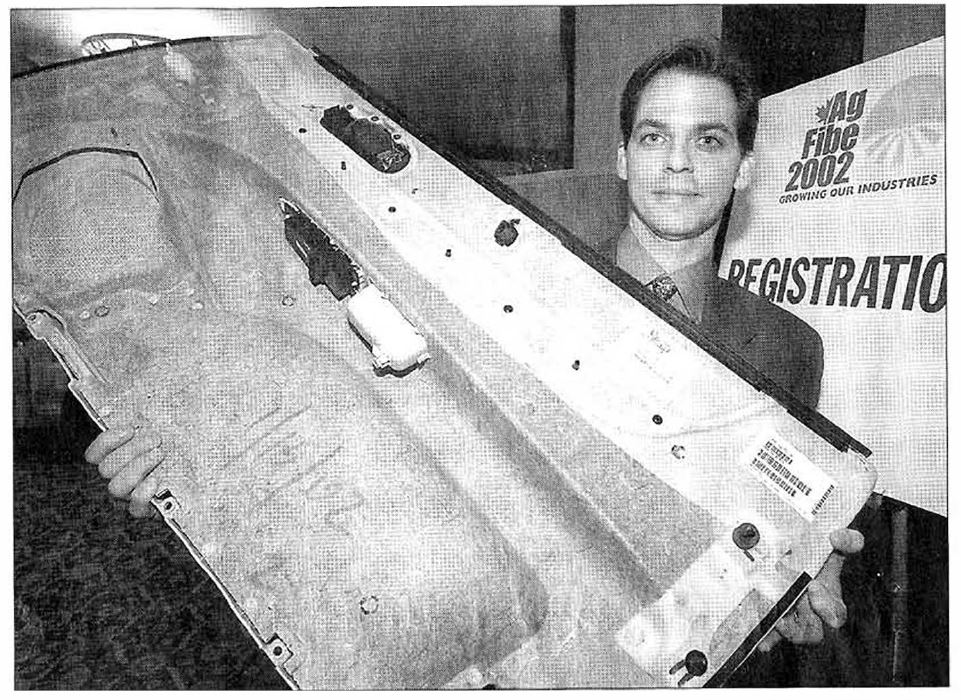Huge markets for use of hemp, flax in car parts
Winnipeg free Press – Business Section
THURSDAY, NOVEMBER 14, 2002
By Geoff Kirbyson
MANITOBA and Canadian farmers could be the next big players in the automotive industry.

Agricultural fibres such as hemp, flax, jute and kenaf are already being used for vehicle door trim panels and structural arm rests, but there are further potential applications for instrument panels, seat cushions, grille opening reinforcement, engine covers and motor undershields, delegates at the Ag Fibe 2002 conference at the Fairmont Hotel were told yesterday.
Ellen Lee, technical specialist in plastics research at Michigan-based Ford Motor Co., said much of the technology is still in the developmental phase, but the potential for growers of those crops is “pretty great.”
“We still have to see if the material will meet the (industry) specifications, but it’s potentially a billion-dollar industry. There could be a huge market for fibres,” she said in an interview.
But that’s not all. The nearly 200 conference delegates were also told there is renewed interest in producing ethanol for blending with gasoline from residue from crops such as wheat, barley and corn.
Bill Cruickshank, who works in bioenergy research and development at the CANMET Energy Technology Centre in Ottawa, said the development of ethanol has been going on for more than 25 years, but developments such as the Kyoto Protocol and attempts by farmers to diversify their income streams has brought it back in vogue.
“The opportunity is as big as the amount of residue you can get your hands on at a price you can afford to pay,” he said in an interview yesterday.
There are also opportunities to use the same ingredients to develop a variety of chemicals that could be used to make artificial sweeteners, biodegradable plastics and additives to improve the quality of different fuels, he said. He added using straw for ethanol instead of burning it also has positive effects for the environment.
Geof Kime, president of Hempline Inc., a Delaware, Ont-based producer of hemp fibre, said the Manitoba government has done a good job of supporting the ag-fibre industry in the province in terms of research and programs for access to capital.
He cautioned there isn’t yet the capacity to handle the potential for fibre-related applications in the automotive industry.
“lf you take 10 to 20 pounds of natural fibre per vehicle and multiply that by the approximately 15 million vehicles produced each year in North America, that represents hundreds of thousands of acres,” he said in an interview.
He said the biggest challenge for the industry is in finding investment capital.